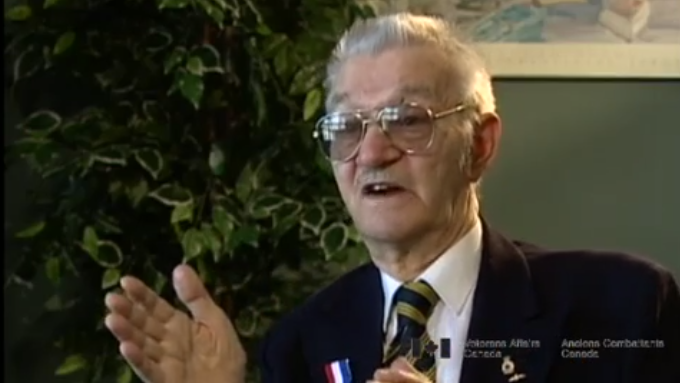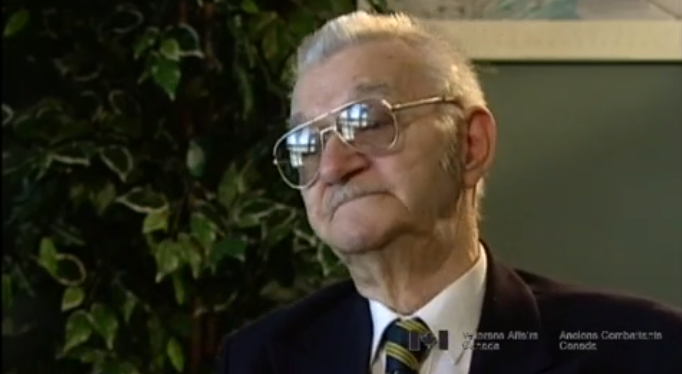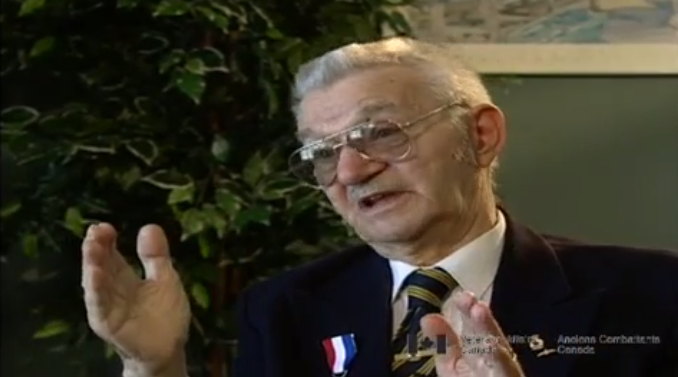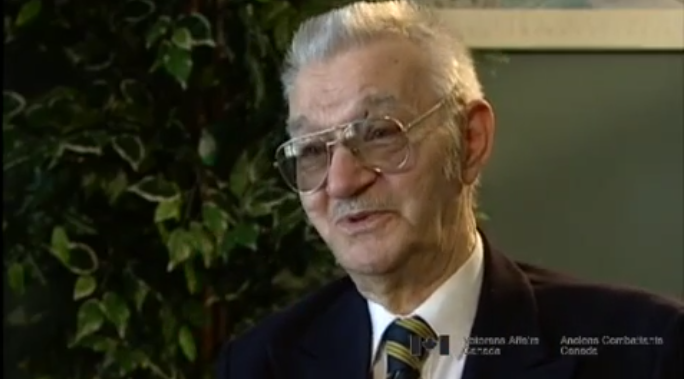Training... the engine, the nine cylinder engine, is a very
fast rev. It just roars like... and the worst thing is
cross-country. The first gear, you gotta open the engine wide
open and you got to be real smart to get in second, otherwise
you’ll be stopped again, because you only go, it looks to be
you’re only going about three, four miles an hour in first gear,
with the engine wide open. So then if you... well, I was a really
experienced driver. I knew I could get in second. But then in
second gear, if it’s really soft, you may not, she may stall on
you, so you’ll find out that it’s going to stall. You’ve got to
de-clutch it right away because you don’t want to stall it.
So anyway, it’s pretty tricky cross-country, but on the road,
on the good road it’s quite simple. It’s steered with bars.
What happens, the right bar locks the rear axle. By the way,
it’s the front because it’s a front-end drive. And then,
the other one speeds up. So that’s just it. The only thing is,
on an asphalt, it’s like driving a car on ice, you can slide.
Sometimes, if the road is tipped, they’ll slide sideways.
That’s with a steel track. Now, there is a rubber track that’s
much better. But when we first got our tanks, they were all
steel track and we landed on D-Day with steel track. To me,
I was a truck driver first. Pass all my grades. I drove all the
different size trucks, even the big one, so it wasn’t all that
hard for me. But you never move it alone. There’s always
somebody with you. You’re not allowed to move it alone.
Because, and the gentleman, the soldier, is generally
a corporal or a sergeant. Mostly a sergeant. You never move it,
they give you the order. They tell you where to go.
The 105 gun... it is not like a tank with a turret. We couldn’t
shoot sideways. I had to be on the target. It was up to me,
actually, to see the target first and then to tell my gunner, and
he would say, “Yep, I see it.” Bang, you know, that was it.
This was when it’s open fire. There was a little leeway on the
tank, on the gun, sideways, but as you see in the picture, you
can see, there’s two strip there. You could go up and down,
but you could not lock a turret with another turret. We couldn’t
go right around. So anyway, when they lined me up on something,
said, “Okay, that’s it.” We couldn’t move while they were firing
because we didn’t have gyro on our tank. Now they got that
today, a gyro. They could fire a tank moving cross-country and
the gun stays straight.













